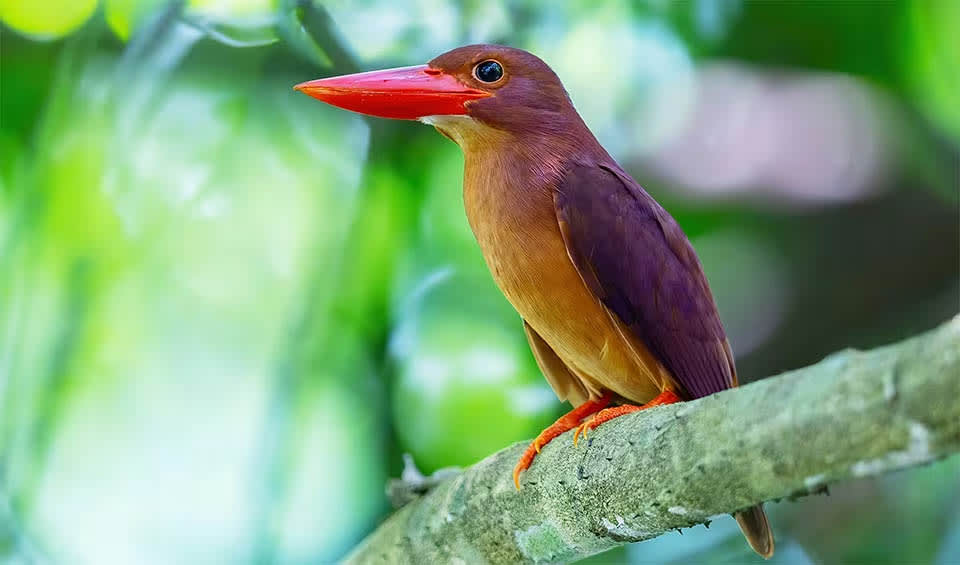This kingfisher is found across a wide geographic range, from Japan and Korea through Southeast Asia, including the Philippines, Indonesia, and parts of India. This bird favors forested areas, including mangroves, tropical rainforests, and bamboo groves. It is also known to inhabit coastal regions and riverbanks, often seen perched quietly in dense foliage. Despite its striking appearance, its preference for dense cover makes it a somewhat elusive species, often heard before it is seen.
The Ruddy kingfisher is renowned for its striking appearance. It has distinctive bright red to chestnut-colored plumage, which contrasts beautifully with its large, coral-red beaks and legs. The vivid coloration is more pronounced in adults, while juveniles have a duller, more brownish hue. The kingfisher’s large head and robust body are typical features designed for powerful dives and precise hunting. Their diet primarily consists of small fish, crustaceans, insects, and amphibians. The Ruddy Kingfisher hunts by perching silently above water or on low branches, watching intently for prey. It dives swiftly once it spots potential prey, capturing it with its strong beak.
Aside from its striking color, the Ruddy kingfisher is known for its unique communication style. Unlike many other bird species, it does not form large flocks. Its distinctive musical call, often described as a high-pitched “keek-keek-keek,” is a common sound in its habitat, especially during the breeding season. This call, a unique feature of the Ruddy kingfisher, helps to establish territory and attract mates. The bird’s vibrant plumage, while striking, also provides camouflage against the reddish-brown forest floor and foliage, aiding in predator evasion.
Distribution
 Bangladesh
Bangladesh Bhutan
Bhutan Brunei
Brunei Cambodia
Cambodia China
China India
India Indonesia
Indonesia Japan
Japan Korea
Korea Laos
Laos Malaysia
Malaysia Myanmar
Myanmar Nepal
Nepal North Korea
North Korea Philippines
Philippines Russia
Russia Singapore
Singapore Taiwan
Taiwan Thailand
Thailand Vietnam
VietnamAnything we've missed?
Help us improve this page by suggesting edits. Glory never dies!
Suggest an editGet to know me
Terrestrial / Aquatic
Altricial / Precocial
Polygamous (size) / Monogamous
Dimorphic (size) / Monomorphic
Active: Diurnal / Nocturnal
Social behavior: Solitary / Pack / Herd
Diet: Carnivore / Herbivore / Omnivore / Piscivorous / Insectivore
Migratory: Yes / No
Domesticated: Yes / No
Dangerous: Yes / No




